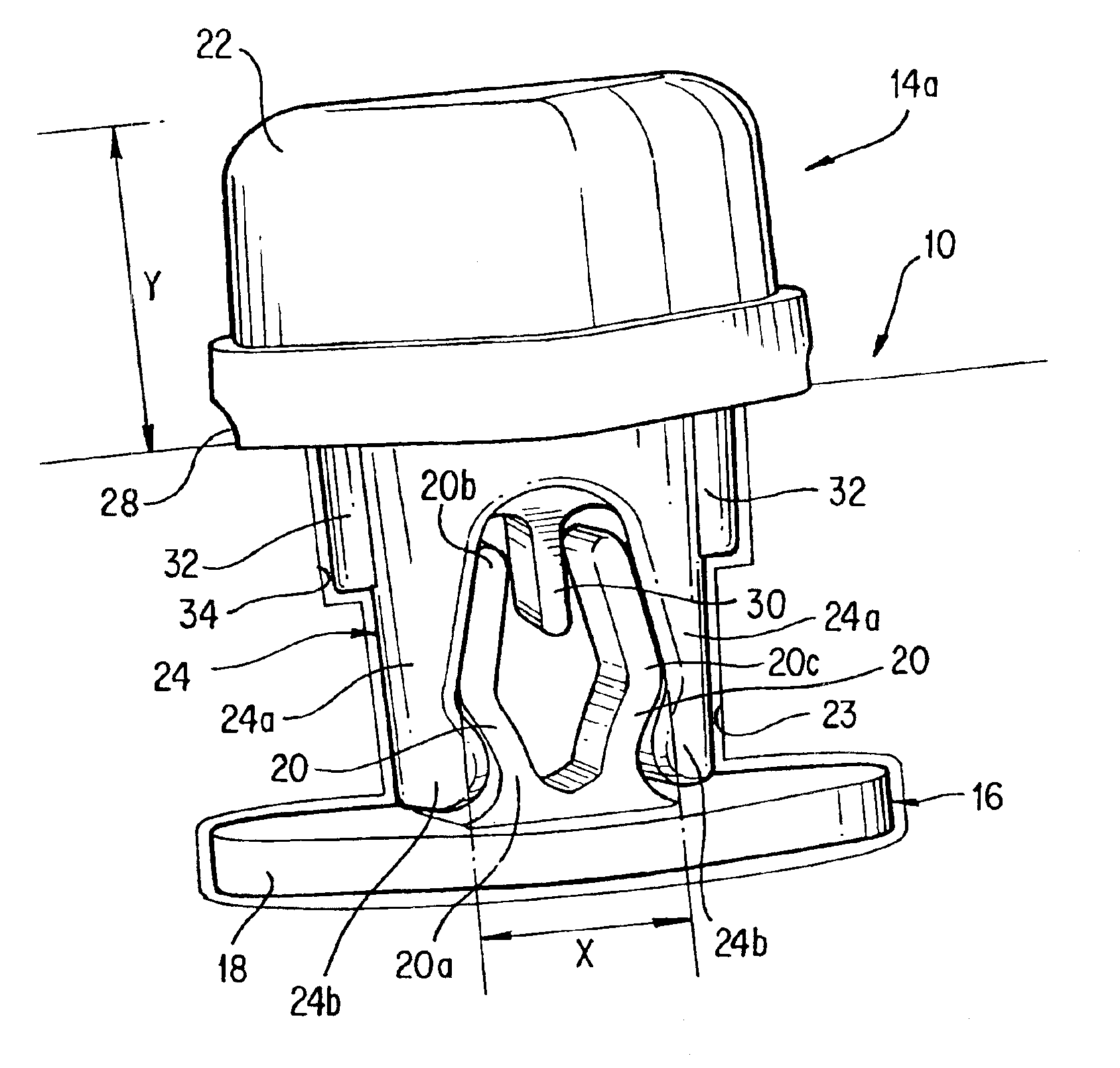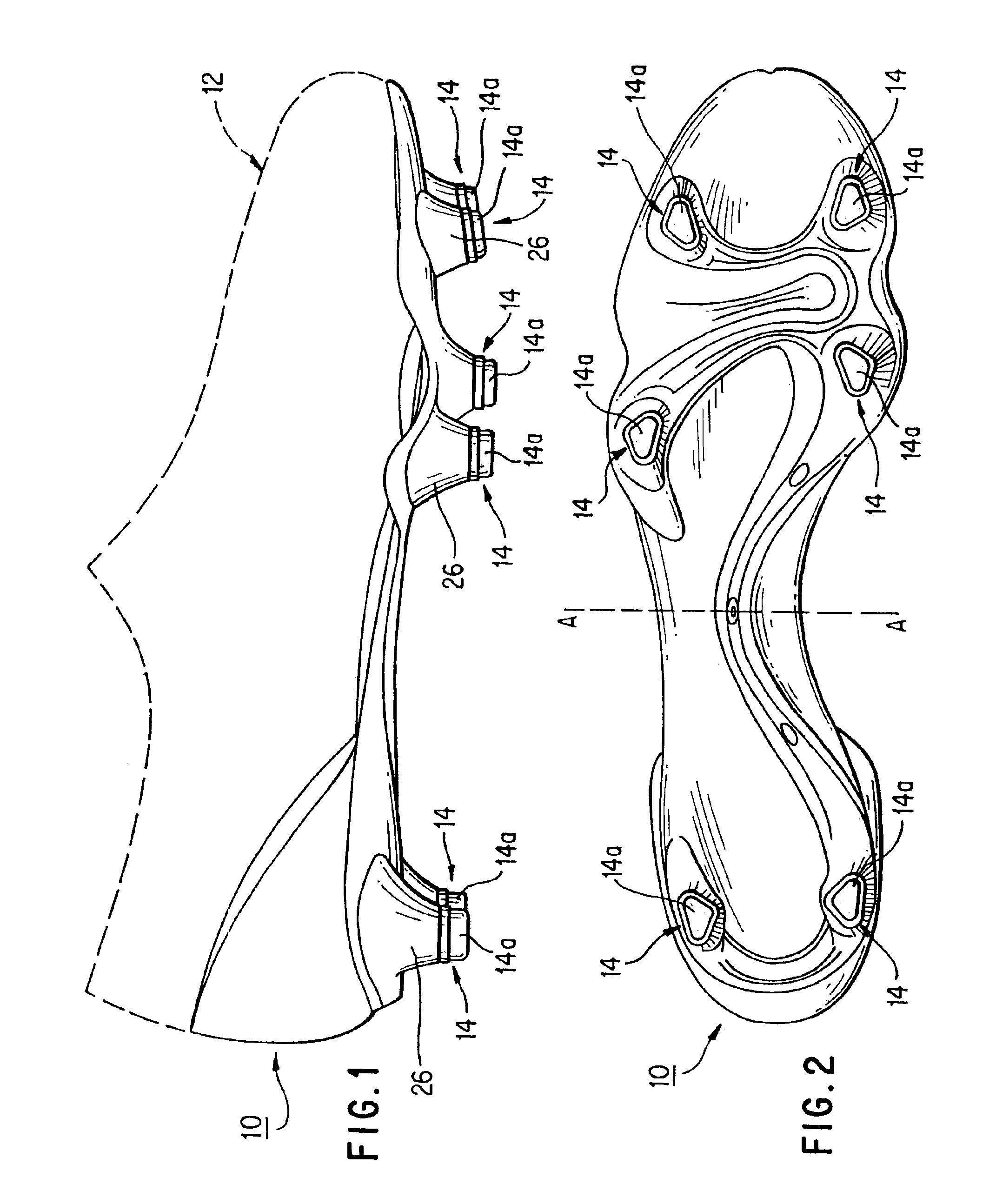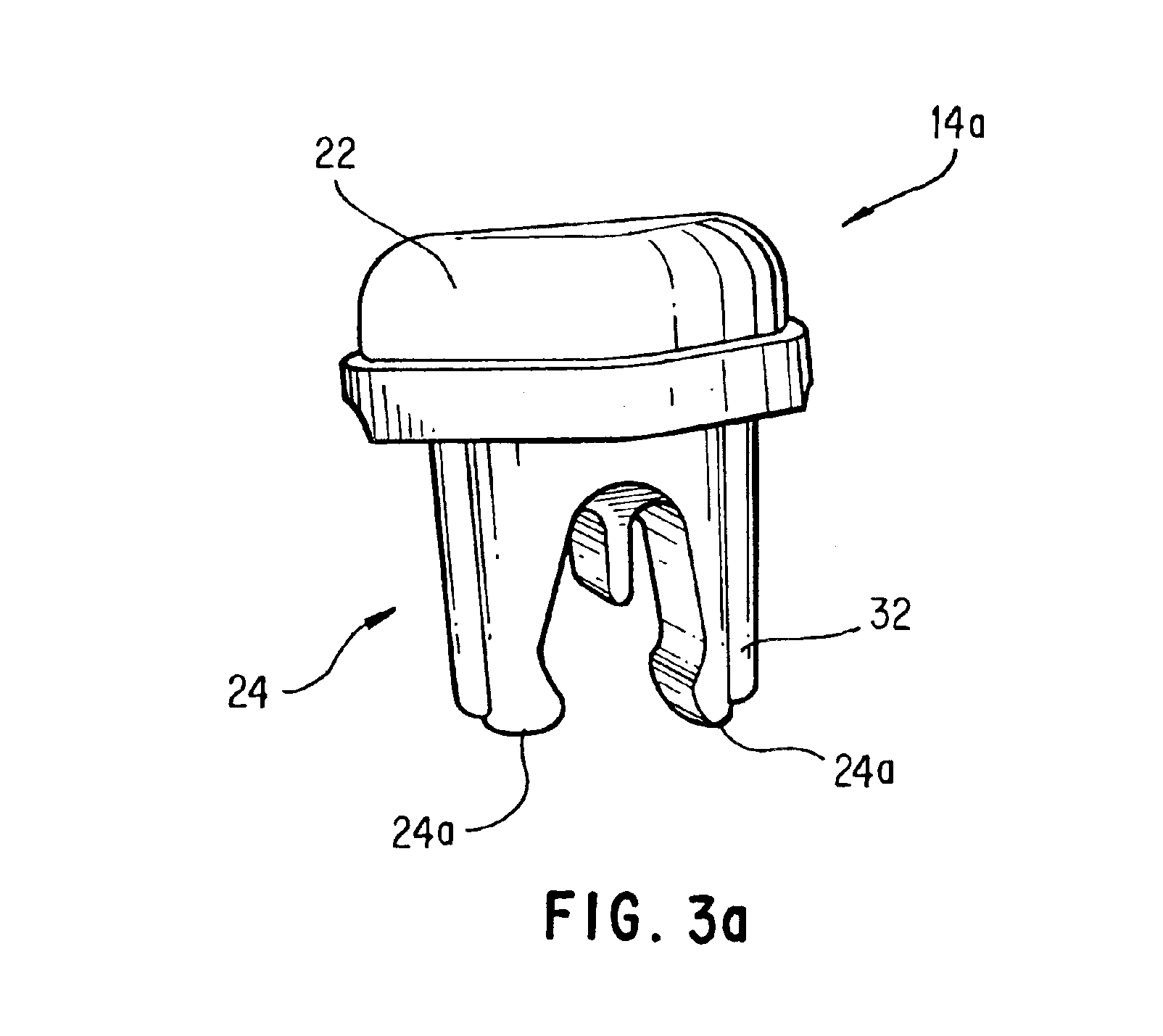Article of footwear with a replaceable ground-engaging member and method of attaching the ground-engaging member
a technology of replacing ground-engaging members and footwear, which is applied in the direction of fastenings, uppers, bootlegs, etc., can solve the problems of time-consuming and laborious, conventionally difficult to recognize when the ground-engaging member has been adequately tightened, and it is difficult or even impossible to subsequently disengage the ground-engaging member from the shoe when desired, so as to avoid the time-consuming conventional process and achieve quick and assured adjustment
- Summary
- Abstract
- Description
- Claims
- Application Information
AI Technical Summary
Benefits of technology
Problems solved by technology
Method used
Image
Examples
Embodiment Construction
[0028]FIG. 1 is a lateral (i.e., from the laterally outer side) elevational view of a footplate 10 of an article of footwear, such as a shoe (particularly, but not necessarily only, an athletic shoe). A right shoe happens to be illustrated by way of example, but this should not be taken as limiting the present invention. In order to assist in the understanding of the subject matter illustrated in the figures, a generic profile of a shoe upper 12 is indicated in phantom in FIG. 1.
[0029]For the purposes of the description herein, the article of footwear has a “sole” which includes footplate 10. However, other parts that may be included in a sole, such as a midsole, etc. have been omitted from the drawings for clarity.
[0030]Footplate 10 includes at least one ground-engaging member 14 extending from footplate 10. Commonly, footplate 10 includes a plurality of ground-engaging members 14 distributed over the surface of footplate 10. FIG. 2 illustrates one example of how ground-engaging me...
PUM
 Login to View More
Login to View More Abstract
Description
Claims
Application Information
 Login to View More
Login to View More - R&D
- Intellectual Property
- Life Sciences
- Materials
- Tech Scout
- Unparalleled Data Quality
- Higher Quality Content
- 60% Fewer Hallucinations
Browse by: Latest US Patents, China's latest patents, Technical Efficacy Thesaurus, Application Domain, Technology Topic, Popular Technical Reports.
© 2025 PatSnap. All rights reserved.Legal|Privacy policy|Modern Slavery Act Transparency Statement|Sitemap|About US| Contact US: help@patsnap.com



